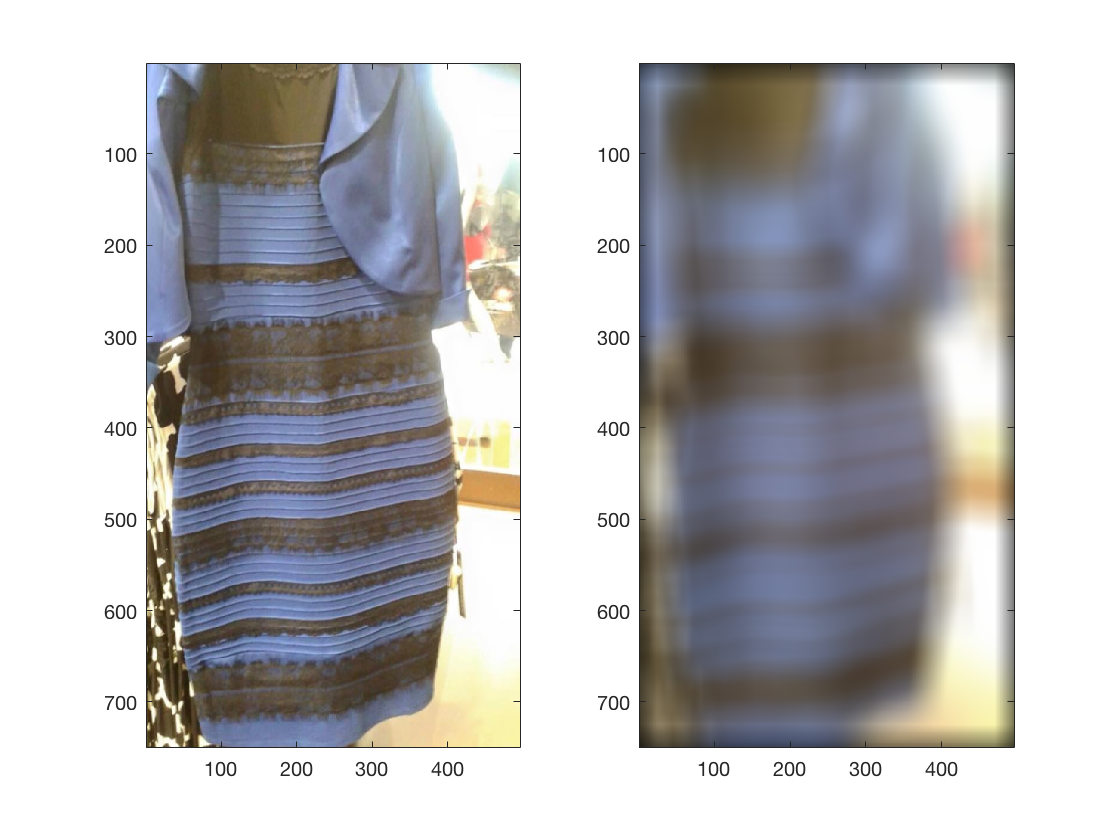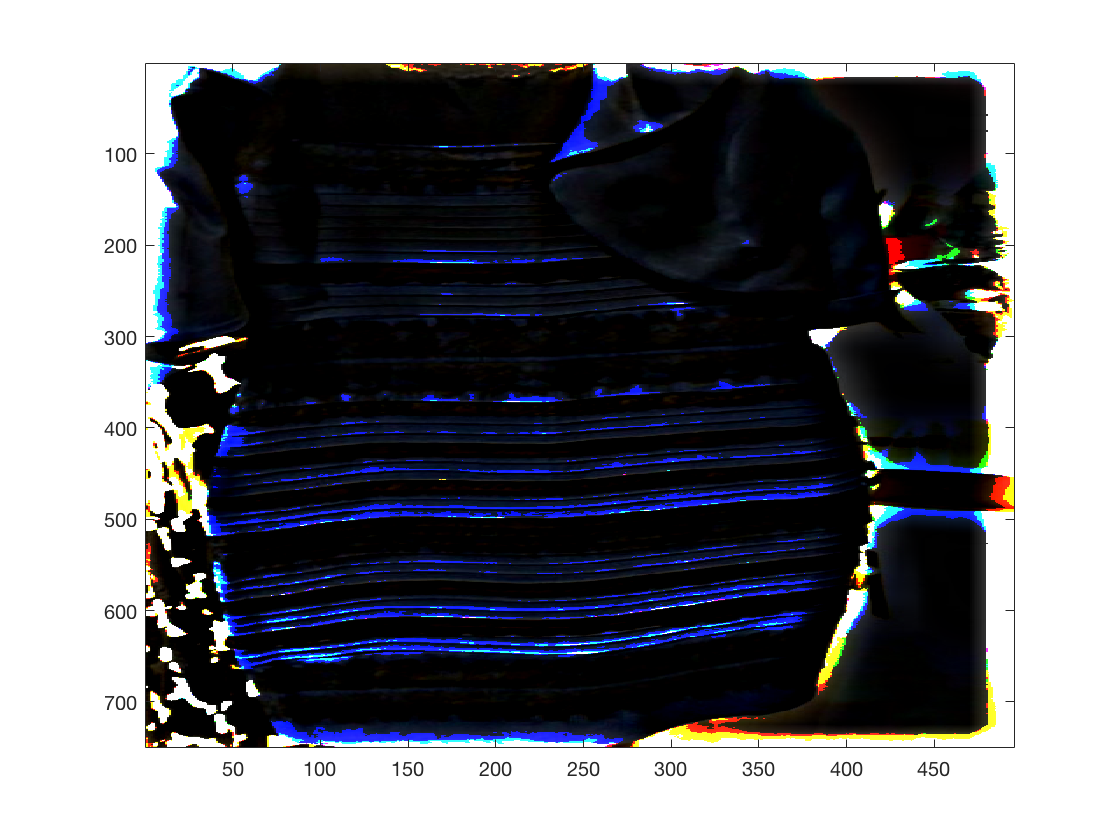Contents
%In this lab, we will do processing of LFP traces in the time domain %and 2D convolution. %1 Init - Clear workspace and load data clear all close all clc %Load data - whatever your directory is. load('/Users/lascap/Desktop/Old Desktop/Work/Teaching/Fall 2016/Math Tools 2016/LAB/LFPdata.mat');
%Exploratory data analysis - plotting the raw data and doing 1D convolution figure plot(A) for ii = 1:100; kernelSize = ii; %This is the length of our kernel kernel = ones(kernelSize,1); %Symmetric, equal weight kernel of size kernelSize pause(0.25) Aconv = conv(A,kernel,'valid')./sum(kernel); %If we don't normalize by sum of kernelweights, result will depend on size of kernel plot(Aconv) title(['Kernel size = ', num2str(ii)]) ylim([-40 20]) shg end %xlim([0 3000])

2D convolution - before we do this with actual image data (where there is a lot going on)
%let's do this with an artificial image where it is easy to see what %convolution is doing. %1. Let's create luminance ramps clear IM numSteps = 10; %I want n steps stepSize = linspace(0,255,numSteps); %MATLAB represents luminance as a number from 0 to 255 %For space reasons, mostly - 8 bit = 1 byte. 256 states [x,y] = meshgrid(0:stepSize(2):255,0:stepSize(2):255); %Creating luminance ramps with meshgrid %Meshgrid creates ramps. To wit figure subplot(1,2,1) imagesc(x) subplot(1,2,2) imagesc(y) colorbar colormap(bone) %To highlight that this represents luminance %We use these ramps to create an image matrix IM IM(:,:,1) = uint8(x); %The first sheet of IM - a 3d matrix - will be x - Red IM(:,:,2) = uint8(zeros(length(x))); %Make the green channel all zeros IM(:,:,3) = uint8(y); %Same for blue figure subplot(1,2,1) image(IM) axis square title('Unfiltered') kernel = ones(5); convIM = uint8(round(convn(IM,kernel))./sum(sum(kernel))); subplot(1,2,2) image(convIM) axis square title('Convolved')
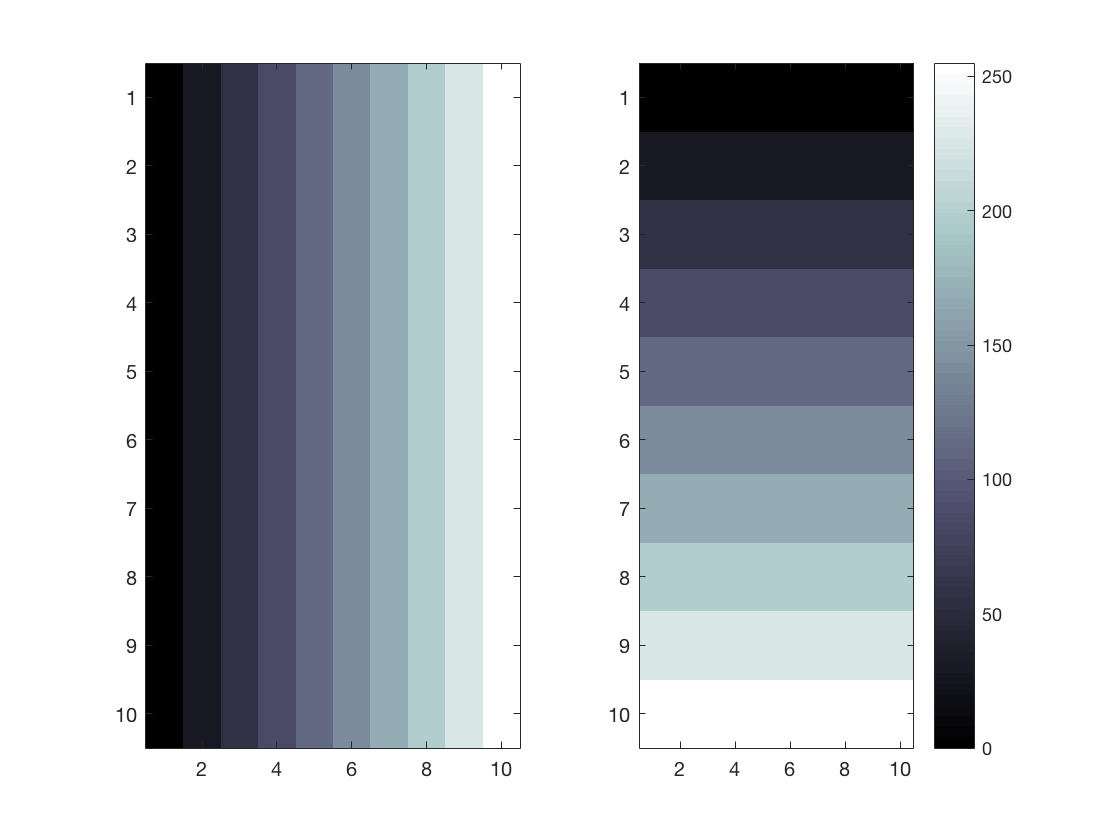
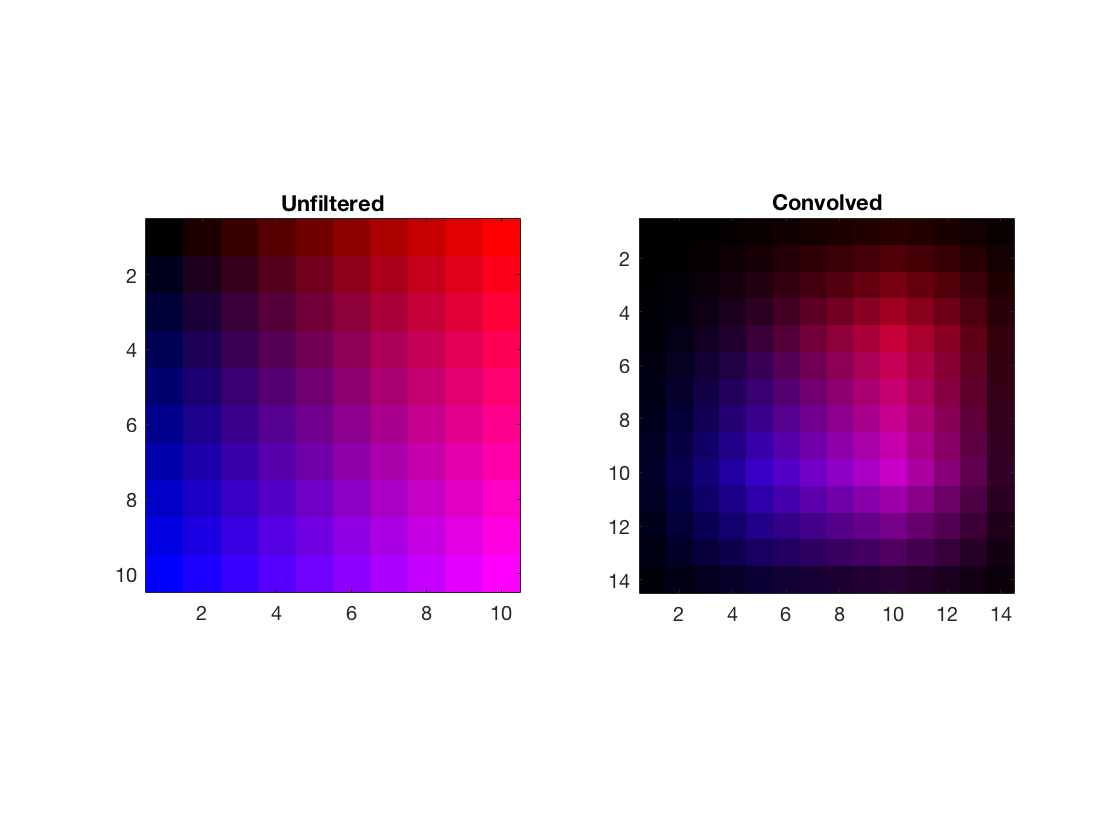
Doing image processing of an actual image
dress = imread('thedress.jpg'); %Putting the dress into a matrix figure image(dress) axis equal shg
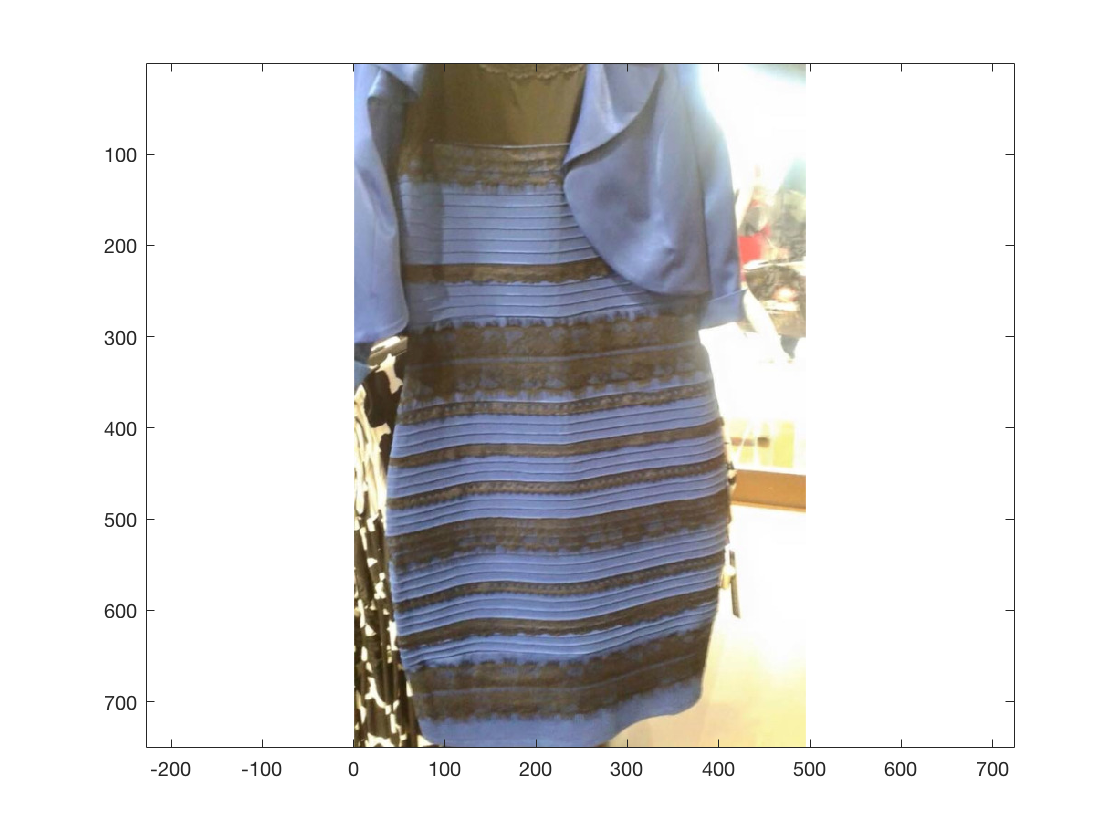
That is the raw dress. We now convolve the image
kernelWidth = 50; figure subplot(1,2,1) image(dress) subplot(1,2,2) kernel = ones(kernelWidth); lp = uint8(convn(dress,kernel,'same')./sum(sum(kernel))); %Same makes a lot of sense for image processing %because we usually want to do further processing, e.g. edge detection image(lp) hp = dress-lp; %This an image that contains a subtracted version of the low pass. %We can only subtract if dress and lp are the same size, which is why we %convolved with "same" above. But note that we used a simple kernel. figure image(hp) %Edge enhancement temp = find(hp>50); %Anywhere where there is signal above threshold hp(temp) = 255; %Set it to full image(hp) %Assignment (small group): Add a edge handling option to your MATLAB - %either constant, reflectance or circular. %Do this now, in small group. %Zero padding is literally a failure of imagination. It is unlikely that %the image (in the real world) ends where you happened to take it.
